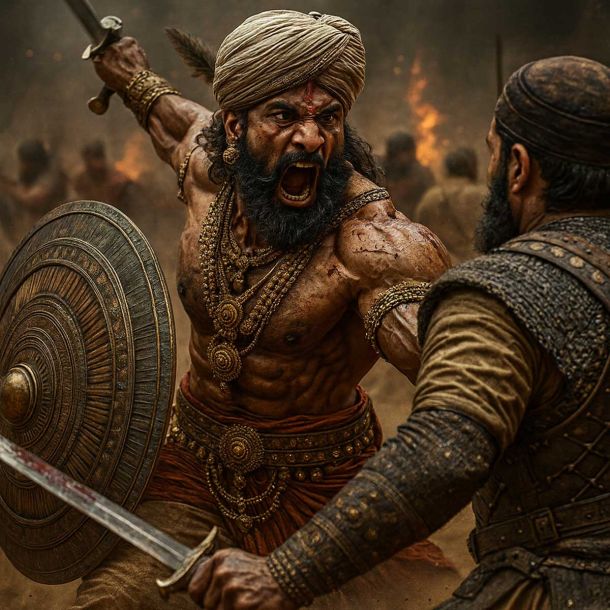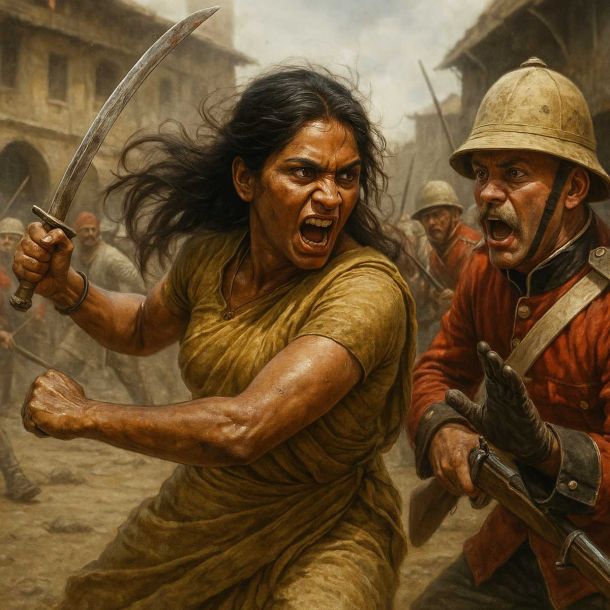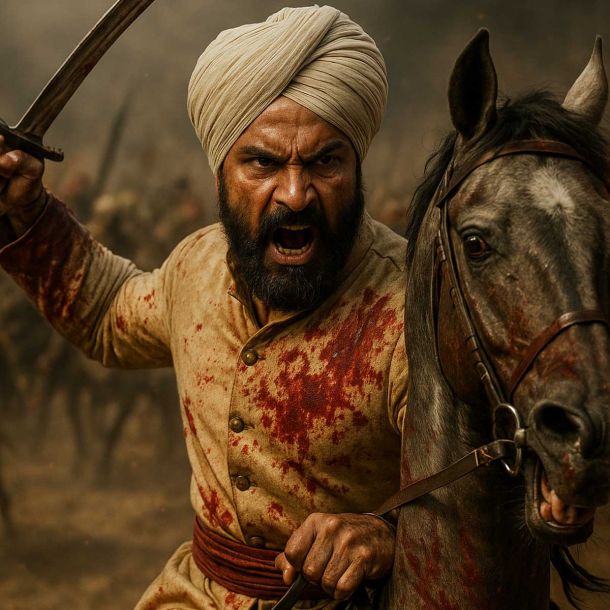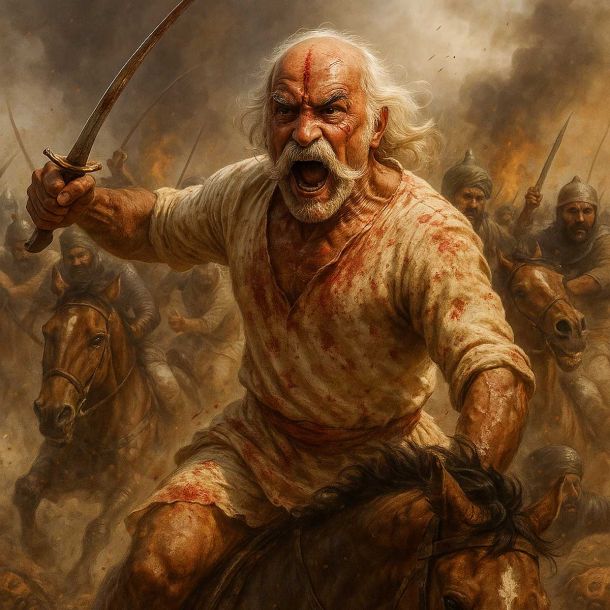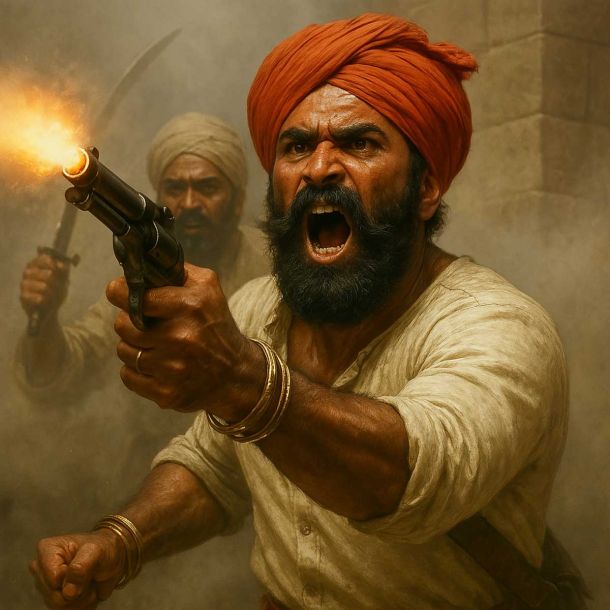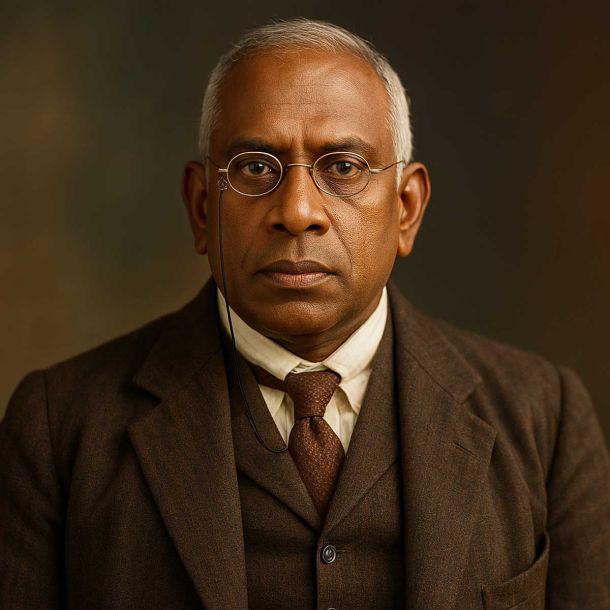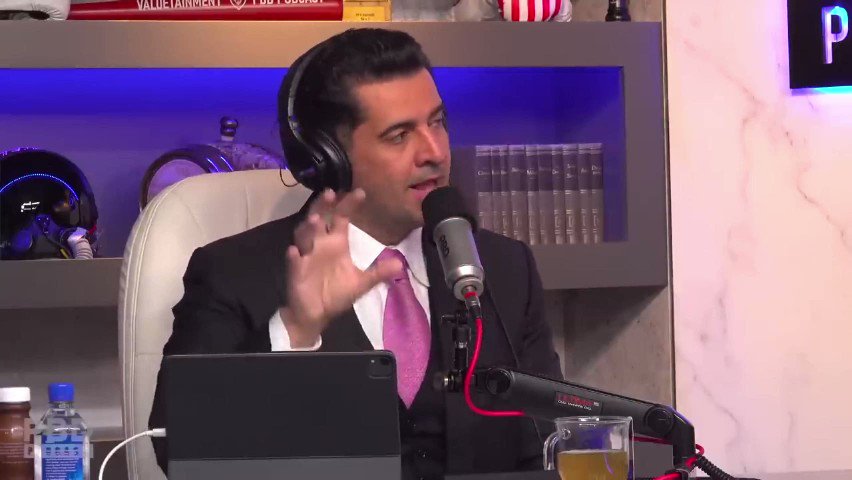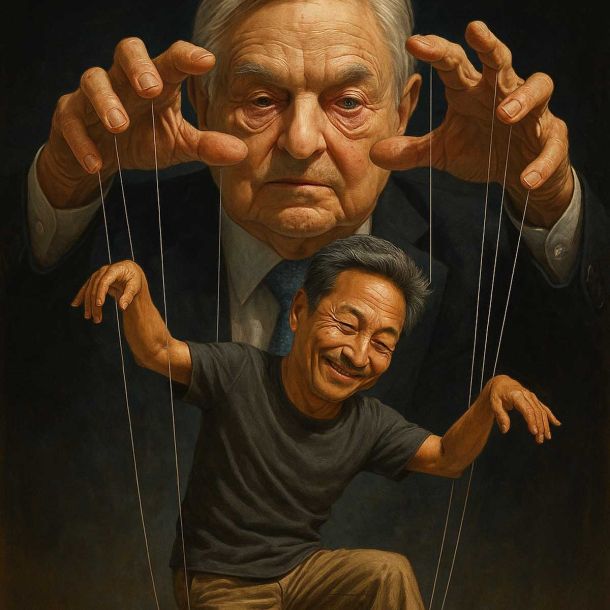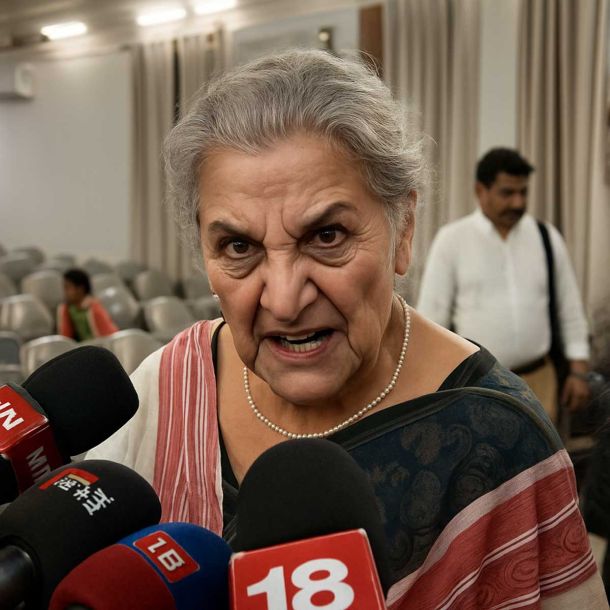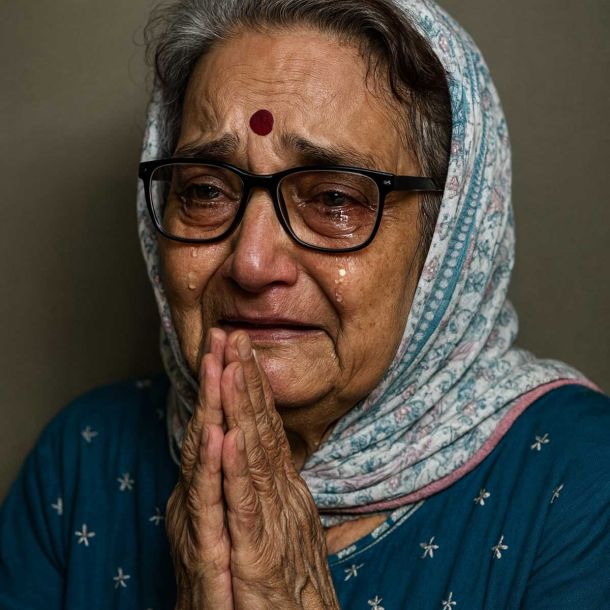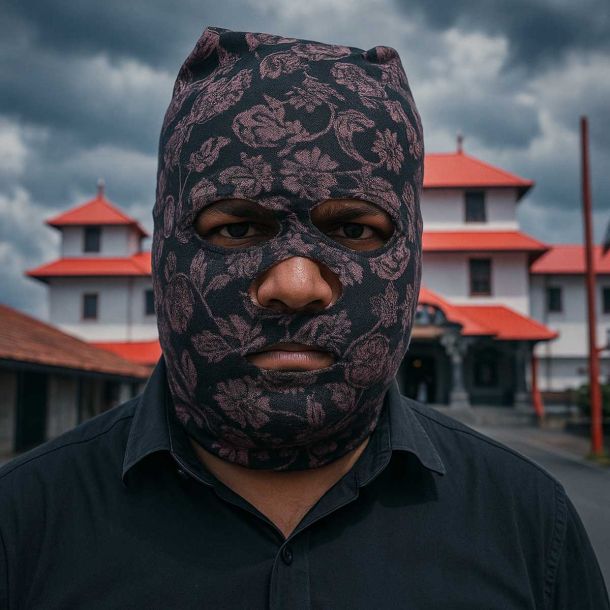MORE COVERAGE
"आफ़रीन": From Sindh’s mass enslavement by Muhammad Qasim to temple demolitions by Sikandar Lodi and Malik Kafur’s southern raids, this gripping account exposes the brutal legacy of Islamic imperialism in India through Arab, Turk & convert rulers alike
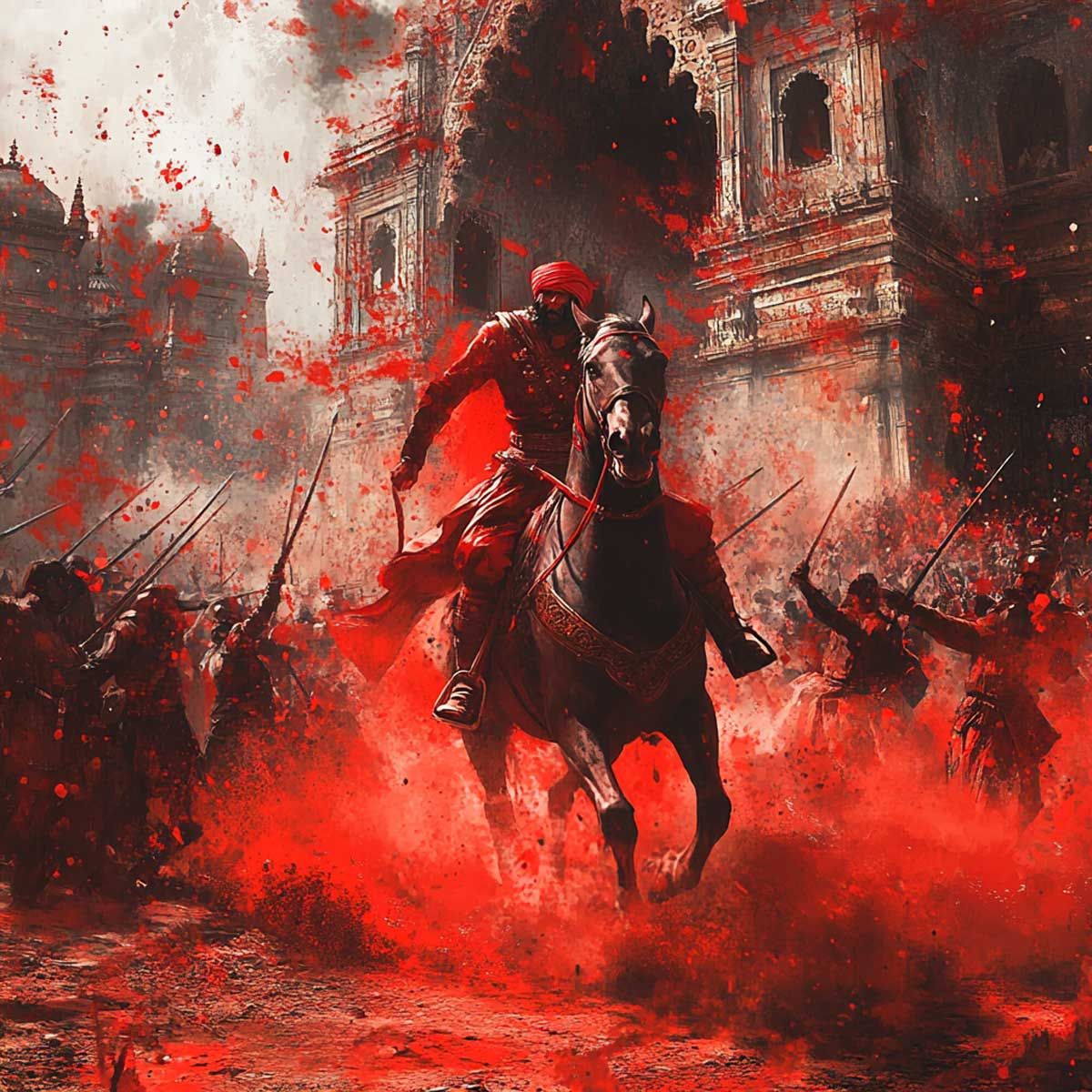
In The Story of Islamic Imperialism in India, Sita Ram Goel presents a sharp and controversial critique of the historical narrative surrounding the Islamic invasions of India. His central argument is not merely against individuals or sects, but against the whitewashing of Islamic history by what he calls the “Aligarh apologists.” According to Goel, these scholars try to shift the blame for the brutal invasions to ethnic groups like the Turks, while sparing Islam itself.
He writes:
“The Aligarh apologists accuse the medieval Muslim historians of exaggerating the barbarities committed by the Muslim invaders and rulers. Next, they blame on the inherent barbarism of the Turks whatever irreducible minimum of atrocities cannot be hushed out of recorded history. And they end by absolving Islam of every crime committed in its name.”
Goel challenges this logic by posing a pointed question:
“How is it that what the Prophet of Islam did in Arabia and the Arab armies in Syria, Iraq, Iran, North Africa, Sicily, Spain and Sindh, bears such close resemblance to what the Turks did in India?”
He questions why the Aligarh school consistently defends Islam’s role in Indian history and instead lays blame on its carriers.
“The Aligarh school is never tired of telling us that Islam would have had a brighter record in India had it been brought by the Arabs instead of the 'terrible' Turks. Pandit Jawaharlal Nehru has swallowed this lie, hook, line, and sinker, and relayed it to two generations of Hindu students through his best-sellers.”
Goel accuses these scholars of manipulating public ignorance:
“Here the Aligarh apologists depend upon the ignorance of the average Hindu about the history of Arab imperialism inspired by Islam ever since the city of Yathrib was converted into Medina after conversion of its pagan citizens and massacre of the Jews. Otherwise, they would not have risked smuggling in such a stupendous lie without batting an eye.”
He insists the truth is not buried in distant lands:
“We need not travel to distant lands in order to discover the truth about Islamic imperialism as practised and perfected by the Arabs.”
Goel presents the Arab conquest of Sindh as a case study:
“What the Arabs did in Sindh, as soon as they entered this unfortunate province of Bharatavarsha, provides every detail of the pattern they had repeated elsewhere.”
|
THE ARAB RECORD IN SINDH
Drawing from the Chachnãma, a primary Muslim source on the Arab invasion of Sindh, Goel illustrates a campaign marked by mass violence and systemic enslavement.
The book recounts the capture of Rawar:
“Muhammad took the fort and stayed there for two or three days. He put six thousand fighting men, who were in the fort, to the sword and shot some (more) with arrows. The other dependents were taken prisoner with their wives and children... amongst whom thirty were the daughters of the chiefs, and one of them was Rãî Dãhir’s sister’s daughter whose name was Jaisiya. They were sent to Hajjãj. The head of Dãhir and the fifth part of prisoners were forwarded in charge of K’ab, son of Maharak.”
The response from Hajjãj was deeply religious and celebratory:
“When the head of Dãhir, the women and the property all reached Hajjãj, he prostrated himself before Allah, offered thanks-giving and praises... Hajjãj then forwarded the head, the umbrellas, and wealth, and prisoners to Walîd the Khalifa.”
The Khalifa responded in kind:
“When the Khalifa of the time had read the letter (of Hajjãj), he praised Allah the great. He sold some of those daughters of the chiefs, and some he granted as rewards... ‘O my nephew! I exceedingly admire this girl and am so enamoured of her, that I wish to keep her for myself. Nevertheless, it is better that you take her to be the mother of your children.’”
Muhammad bin Qãsim’s military tactics involved betrayal and psychological warfare. He made pacts with local merchants, then sought approval from Hajjãj for his actions. The response was chilling:
“O my cousin! I received your life-inspiring letter... Allah says - Give no quarter to infidels but cut their throats... After this, give no quarter to any enemy except to those who are of rank. This is a worthy resolve, and want of dignity will not be imputed to you.”
Qãsim obeyed, as the Chachnãma notes:
“One fifth of all the prisoners were chosen and set aside: they were counted as amounting to twenty thousand in number, and the rest were given to the soldiers... He sat on the seat of cruelty, and put all those who had fought to the sword. It is said that about six thousand fighting men were slain, but according to some, sixteen thousand were killed.”
He implemented Sharia-based taxation:
“Muhammad bin Qãsim fixed a tax upon all subjects according to the laws of the Prophet. Those who embraced Islam were exempted from slavery, the tribute and poll-tax, and from those who did not change their creed a tax was exacted according to three grades.”
Muslims were granted special rights:
“As the commander of the faithful, Umar, son of Khattãb, had ordered respecting the people of Shãm (Syria), so did Muhammad bin Qãsim also make a rule that every (Muslim) guest should be entertained (in Hindu homes) for one day and night, but if he fell sick then for three days and nights.”
Massacres followed:
“He went into the fort, killed four thousand fighting men with his bloody sword and sent their families into slavery.”
And in Multan:
“Six thousand warriors were put to death, and all their relations and dependents were taken as slaves.”
A newly converted Brahmin proclaimed:
“Heathenism is now at an end, the temples are thrown down, the world has received the light of Islam, and mosques are built instead of idols temples.”
Historian Al Biladuri adds a financial dimension in Futûhul-Buldãn:
“We are told that Hajjãj caused a calculation to be made of the sums expanded in fitting out this expedition of Muhammad bin Qãsim, and the riches which resulted from it. He had spent 60 million dirhams and that which had been sent to him amounted to 120 millions dirhams.”
Goel underscores that this 120 million dirhams was only a fifth of the total loot:
“Another four hundred and eighty million dirhams were distributed among Muslim soldiers in the field.”
And more tragically:
“This total of 600 million dirhams does not include the sale proceeds of nearly two hundred thousand Hindu men, women and children who were taken prisoners and put to auction all over the world of Islam at that time.”
|
PERFORMANCE OF THE PATHANS
Sita Ram Goel raises another strong question: Why did the Pathans—who had always fought against the Turks—end up treating the Hindus in the same brutal way as the Turks did?
He writes:
“My second question is: How come that the Pathans, who hated the Turks and fought them tooth and nail throughout the medieval period, followed the Turks so faithfully in their treatment of the Hindus?”
To explain this, Goel presents the example of Sikandar Lodi, a ruler with a mixed heritage. His father was a Pathan, and his mother was the daughter of a Hindu goldsmith from Sirhind. Despite his maternal lineage, his actions against Hindus were extremely harsh.
From Abdullah's Tãrîkh-i-Dãûdî, written during Jahangir’s reign, we learn:
“It is also related of this prince that before his accession, when a crowd of Hindûs had assembled in immense numbers at Kurkhet, he wished to go to Thanesar for the purpose of putting them all to death.”
His religious zeal went further:
“He was so zealous a Musalmãn that he utterly destroyed diverse places of worship of the infidels and left not a vestige remaining of them. He entirely ruined the shrines of Mathura, the mine of infidelism, and turned the principal Hindû places of worship into caravanserais and colleges. Their stone images were given to the butchers to serve as meat-weights, and all the Hindûs in Mathura were strictly prohibited from shaving their heads and beards and bathing at the ghãts.”
Historian Badauni, in Muntakhãb-ut-Tawãrîkh, adds:
“He took the fort (of Untgarh) and gave the infidels as food for the sword. He then cast down the idol temples and built there a lofty mosque.”
Sikandar Lodi continued this pattern in Narwar and many other places over the years.
|
BEHAVIOUR OF HINDU CONVERTS
Goel's third question is even more uncomfortable: Why did converted Hindus, now Muslims, treat their fellow Hindus just as cruelly—or even worse—than the Turks or Pathans?
He writes:
“My third question is: How do we explain the behaviour of marauders who were not Turks but Hindus converted to Islam, and who behaved no better, if not worse, than the much-maligned Turks?”
Some dismiss the story of Kalapahar as a made-up tale. Goel points out that even if that is debated, the historical record around Malik Kafur is undeniable and comes from the famous poet and historian Amir Khusru, who lived during those times.
Malik Kafur was originally a young Hindu boy captured during the 1298 AD Gujarat invasion by generals Ulugh Khan and Nusrat Khan under Sultan Alauddin Khalji. He was sold for 1,000 dinãrs, converted to Islam, and given to the Sultan.
“He was bought by Nusrat Khan for a thousand dinãrs, converted to Islam, and presented to the emperor at Delhi. Alauddin was infatuated by Kafur who rose rapidly to be the topmost officer of the empire, titled Malik Naib.”
In 1310–1311 AD, Kafur led a major southern campaign. While Devagiri had already surrendered, Dvarasamudra gave up without a fight. However, the Pandya prince of Madurai resisted fiercely using guerrilla tactics.
In return, Kafur turned his rage on civilians and temples.
“The Malik Naib took it out on the non-combatant common people and their temples. At Brahmastapur (modern Chidambaram), he massacred the citizens, demolished the golden temple, and dug up its foundations. Next, the temples at Srirangam and in the neighbourhood of Kannanur were sacked. At Madurai he set fire to the temple of Sokkanatha.”
He later retreated due to strong resistance but did not leave empty-handed:
“He had to beat a retreat in the face of fierce Hindu resistance. But he did not forget to capture and carry with him an immense booty and hordes of prisoners who were sold into slavery all along his long route to the imperial headquarters at Delhi.”
Another painful example is Suhabhatta, also known as Suhã, a Hindu convert to Islam and chief minister to Sikandar Butshikan of Kashmir (1389–1413 AD). Goel refers to Jonarãja’s RãjatariñgiNî, which documents Suhabhatta’s actions:
“Instructed by mlechhas, (Suhã) instigated the king to break down the images of Gods. The king forgot his kingly duties and took a delight day and night in breaking images. He broke the images of MãrtaNDa, Vishaya, Î’ãna, Chakravaratî and Tripure’vara. There was no city, no town, no village, no wood where Suhã and the Turushka left the temples of Gods unbroken.”
Suhabhatta remained chief minister under Sikandar’s son, Ali Shah (1413–1420 AD). But his policies became more severe.
“During Sikandar’s reign, he had stopped at destroying Hindu temples. Under the new regime, he started persecuting the Brahmins. Their religious performances and processions were banned. The traditional allowances of the Brahmins were stopped.”
The results were tragic:
“The Brahmins, therefore, became beggars who had to move from door to door, like dogs, for food. Many of them tried to flee the land to escape oppression and save their caste. But they could not do so without an official permit. As a result, many of them committed suicide by fire, poison, drowning, hanging, and jumping from precipices.”
And Suhabhatta’s defense for all this?
“Suhabhatta maintained that he bore no malice towards the Brahmins, and that he was only doing his duty towards Islam!”
|
TURKS WERE BRUTALISED BY ISLAM
Sita Ram Goel moves on to his fourth pointed question: If the Turks were naturally barbaric, as claimed by some modern Islamic scholars, why did they show kindness and generosity toward fellow Muslims—but cruelty and oppression when dealing with Hindus?
He writes:
“My fourth question is: Were the Turks really such black barbarians as they have been painted by the Aligarh apologists? How then do we explain the glaring contradiction in the behaviour of many Turkish kings who were such fearsome fiends when dealing with Hindus, but who became benevolent monarchs when dealing with Muslims?”
Goel challenges this theory with the example of Mahmud Ghaznavi, known for his invasions and plunder of Hindu temples but praised in Muslim historical records for his personal qualities.
In The Life and Times of Sultan Mahmud of Ghazna, historian Muhammad Nazim writes:
“The Sultan was affectionate by nature... Sultan Mahmud was strict in the administration of justice... Sultan Mahmud was a poet and scholar of some reputation. He is said to have been the author of a book named Tafridul-Furu which was regarded as a standard work on Fiqh... The Sultan was a great patron of learning and his court was the rendezvous of scholars from all parts of the Muslim world... His meanest rewards were calculated in thousands of dinãrs, and the later generation of poets cherished his memory chiefly as a giver of ‘elephant loads’ of gold and silver.”
Goel adds from Firishta’s account that Mahmud used the wealth looted from Kanauj to build great institutions:
“Firishta records that he used the war booty captured from Kanauj for building at Ghazni a magnificent mosque, a university well-stocked with books, and a museum full of many curiosities.”
The pattern is repeated in the story of Jalaluddin Khalji, who was known for his cruelty towards Hindus. But when dealing with Muslims, his actions were completely different.
Goel notes:
“He was second to none among the Muslim kings when it came to heaping atrocities on Hindus. But when Malik Chhajju, who had rebelled against him and caused bloodshed, was brought before him in chains, he overruled his advisers for harsh punishment with the remark that he would rather renounce his throne than shed the blood of a Muslim!”
Jalaluddin again chose leniency when fighting against Hindus:
“Again, when the Rana of Ranthambhor refused to surrender, Jalaluddin gave up the siege of the fort, in spite of protests from his generals, with the remark that he did not consider ten such forts worth a single hair of a Muslim's head!”
Firuz Shah Tughlaq is another example of such dual behavior. Known as a builder and promoter of learning, he is described in his own writings as someone who cared for the people:
“Better a people's weal than treasures vast; better an empty chest than hearts downcast.”
|
But Goel points out an important limitation in that statement:
“But by 'people' he meant only the Muslims. For Hindus he was nothing short of a monster.”
This raises an important issue:
“The much-maligned Turk did have another face which was far from being that of a barbarian. It is quite another matter that the benevolent face of the Turk was always and exclusively turned towards his Muslim Ummah, and never towards the ‘accursed’ Hindus.”
Goel challenges the racial theory of Turkic barbarism directly:
“What is relevant here is that crimes committed by the Turks in India cannot be explained away in terms of a barbarism inherent in his race. Pandit Jawaharlal Nehru who also blames the crimes of Islam on the barbarism of the Turks says in the same breath that the Turks were Buddhists before they got converted to Islam. Was it Buddhism that had brutalised the Turks? Or had Buddhism failed to humanise them?”
Finally, Goel calls attention to the historians themselves—those who recorded these acts. Many were not Turks, but Arabs and Persians, often regarded as the carriers of refined Islamic culture.
He asks:
“But even if we concede, for the sake of argument, that the Turk was a born barbarian, the basic question remains unanswered. Some of the medieval Muslim historians were not Turks. They were Arabs and Persians whom the Aligarh apologists credit with the quintessence of Islamic culture. Quite a few of them were learned mullahs conversant with the commandments of Islam. The positions and privileges they obtained in the courts of their Turkish patrons were entirely due to their erudition.”
This leads to Goel’s fifth and final question:
“Why did these medieval Muslim historians credit their patrons with crimes which the latter had not committed, or exaggerate the scale of some minor misdemeanours?”
Before answering these five deep questions, Goel sets the stage for what comes next:
“Before we find answers to these five questions let us first have a look at the scale and magnitude of the crimes which medieval Muslim historians have laid at the doors of most of the Muslim monarchs and their minions. Let us see if the narrations of those crimes reveal a pattern. Then we shall proceed to inquire if the pattern conforms to the crudities of normal human nature, or to the commands of an inhuman and imperialist ideology masquerading as religion.”
 |
References:
Sita Ram Goel - The Story of Islamic Imperialism in India, Voice of India
 Support Us
Support Us
Satyagraha was born from the heart of our land, with an undying aim to unveil the true essence of Bharat. It seeks to illuminate the hidden tales of our valiant freedom fighters and the rich chronicles that haven't yet sung their complete melody in the mainstream.
While platforms like NDTV and 'The Wire' effortlessly garner funds under the banner of safeguarding democracy, we at Satyagraha walk a different path. Our strength and resonance come from you. In this journey to weave a stronger Bharat, every little contribution amplifies our voice. Let's come together, contribute as you can, and champion the true spirit of our nation.
 |  |  |
| ICICI Bank of Satyaagrah | Razorpay Bank of Satyaagrah | PayPal Bank of Satyaagrah - For International Payments |
If all above doesn't work, then try the LINK below:
Please share the article on other platforms
DISCLAIMER: The author is solely responsible for the views expressed in this article. The author carries the responsibility for citing and/or licensing of images utilized within the text. The website also frequently uses non-commercial images for representational purposes only in line with the article. We are not responsible for the authenticity of such images. If some images have a copyright issue, we request the person/entity to contact us at This email address is being protected from spambots. You need JavaScript enabled to view it. and we will take the necessary actions to resolve the issue.
Related Articles
- Revival of Universal Spirituality - Defence of Hindu Society
- A Pilgrim to the Soviet Paradise - Genesis and Growth of Nehruism Vol 1
- Ban this book "Hindu View of Christianity and Islam" by Ram Swarup - Freedom of Expression
- The Residue of Islamism - Hindu Society Under Siege
- Sanãtana Dharma Versus Prophetic Creeds - Defence of Hindu Society
- The Character of Muslim Rule in India - The Story of Islamic Imperialism in India
- "In public realm, secularism should not concede a single inch to religious intrusions": India never knew a theocratic state till Islam entered Bharat, Hindu Dharma always was a pluralistic religion till genesis of Nehruvian Secularism for mystic reasons
- Historian with Communist glasses: When Pandit Nehru rose to unrivalled power and position in India his book 'Glimpses of World History' was recommended as a reliable reference work for advanced students of history in Indian universities
- Tipu Sultan remembered as killer of Brahmins and demolisher of temples in many villages of Tamil Nadu: a freedom fighter or Islamic bigot?
- The Residue of Macaulayism - Hindu Society Under Siege
- The Communist Conspiracy - Hindu Society Under Siege
- Standing Up to Scrutinize Islam - Freedom of Expression
- "If chicken and geese pass a resolution about peace, the wolf is not convinced": Hindus have to know that Christianity & Islam ain't religions but imperialist ideologies whose appetite has been whetted by running roughshod over a large part of the world
- The Basis of Universal Spirituality - Defence of Hindu Society
- Islam Imposes an Emergency on India - Freedom of Expression
Related Articles
Twitter Coverage
Satyaagrah
Written on
Satyaagrah
Written on
Satyaagrah
Written on
Satyaagrah
Written on
Satyaagrah
Written on
